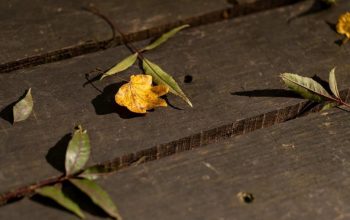The Oak Tree Poem by Johnny Ray Ryder Jr.
Finding a PDF of Johnny Ray Ryder Jr.’s “The Oak Tree” online may prove challenging. Many websites mention the poem but don’t offer direct downloads. However, searching for variations of the title might yield results. Remember to check copyright information before using any found poem.
Overview of the Poem’s Message
Johnny Ray Ryder Jr.’s “The Oak Tree” uses the enduring strength of an oak tree to convey a powerful message of resilience in the face of adversity. The poem depicts the oak’s unwavering stance against a relentless wind, symbolizing the perseverance needed to overcome life’s challenges. Despite losing leaves and branches, the oak remains steadfast. This imagery serves as a potent metaphor for inner strength and the ability to withstand hardship. The poem subtly encourages readers to find their own inner oak, their own source of resilience, enabling them to endure storms and emerge stronger. The simplicity of the language and the impactful imagery make the poem’s message accessible and unforgettable, offering solace and hope to readers facing difficult times. The poem’s central theme is the ability to endure and overcome obstacles, ultimately inspiring hope and a sense of strength in the face of adversity. The poem’s emotional impact comes from its ability to connect with the reader on a personal level, making it a source of comfort and inspiration.
Themes of Resilience and Perseverance
Resilience and perseverance are central themes woven throughout Johnny Ray Ryder Jr.’s “The Oak Tree.” The poem’s narrative focuses on an oak tree enduring a fierce and relentless windstorm. The storm, a symbol of life’s hardships and challenges, relentlessly attacks the tree, stripping away its leaves and branches. Yet, despite this brutal assault, the oak stands firm. This unwavering stance embodies the theme of resilience – the ability to bounce back from adversity, to withstand pressure, and to maintain one’s integrity in the face of overwhelming odds. The oak’s continued survival, even in a weakened state, highlights the power of perseverance. It showcases the importance of enduring through difficult times, of refusing to yield to the pressures of life’s storms. The poem subtly suggests that even when stripped bare, inner strength remains, and the capacity to endure ultimately leads to renewed growth and strength.
Analysis of Poetic Devices Used
Ryder Jr.’s “The Oak Tree” effectively employs several poetic devices to convey its message. The poem utilizes vivid imagery, such as “a mighty wind blew night and day,” painting a picture of the relentless storm. This imagery creates a strong sense of the challenges faced by the oak tree, making the reader empathize with its struggle. The repetition of lines, particularly the description of the wind’s destructive force, emphasizes the intensity and duration of the adversity. This repetition creates a rhythmic effect, reinforcing the poem’s message of unwavering perseverance. Personification is also evident; the wind is given human-like qualities, as it “gave up and spoke,” adding depth to the narrative. The use of simple language makes the poem accessible and impactful, while the metaphor of the oak tree as a symbol of resilience is both clear and resonant. The poem’s structure, with its straightforward stanzas, contributes to its overall impact, making it memorable and easy to understand.
Variations and Interpretations of “The Oak Tree”
Multiple versions of “The Oak Tree” exist online, potentially with slight variations in wording. Interpretations often focus on themes of resilience and overcoming adversity, making it a versatile poem for various contexts.
Different Versions and Adaptations
The online search results reveal a fascinating multiplicity in the presentation of Johnny Ray Ryder Jr.’s “The Oak Tree.” While the core message of resilience remains consistent across various iterations, subtle differences in phrasing and stanza structure emerge. Some versions present the poem as a single, continuous narrative, while others break it into shorter stanzas, potentially altering the rhythmic impact and overall feel. These variations might be attributed to different transcriptions, adaptations for specific audiences or purposes (like children’s books or inspirational readings), or even the evolution of the poem itself over time. The core imagery—the wind’s relentless assault and the oak’s steadfast endurance—remains, but minor alterations in word choice, punctuation, or even the addition of introductory or concluding lines can subtly alter the poem’s tone and emphasis. The lack of a single, definitive source online further contributes to this diverse landscape of textual presentations.
The Poem’s Use in Various Contexts
The enduring appeal of Johnny Ray Ryder Jr.’s “The Oak Tree” poem is evident in its diverse applications. Beyond its inherent literary merit, the poem’s powerful message of resilience resonates deeply across various contexts. It frequently appears in educational settings, serving as a potent tool for teaching themes of perseverance and overcoming adversity. Its concise yet impactful language makes it suitable for both younger and older audiences. The poem’s imagery also lends itself well to visual interpretations, making it an excellent subject for artwork or creative writing prompts. Furthermore, its inspirational message finds its way into motivational speeches, self-help materials, and even religious contexts, where the oak tree can symbolize faith and steadfastness in the face of life’s challenges. The poem’s adaptability and profound message ensure its continued relevance and use in diverse settings.
Availability of “The Oak Tree” Poem in PDF Format
Direct PDF downloads of “The Oak Tree” by Johnny Ray Ryder Jr. are scarce online. Many websites mention the poem but don’t offer a PDF version for download. Thorough online searches might reveal alternative sources.
Online Resources for Downloading the Poem
Locating a readily available PDF of Johnny Ray Ryder Jr.’s “The Oak Tree” poem online requires a multifaceted approach. While a dedicated, single source for a PDF may not exist, several strategies can be employed. Begin by searching major online poetry databases and archives; some may host the poem in a downloadable format. Explore websites specializing in the works of lesser-known poets; these often feature works in various formats. Consider searching for anthologies or collections that include the poem; these might offer a PDF download or provide details on where to find it. Utilizing advanced search operators (like quotation marks around the title) on search engines can refine your results. Remember to always check for copyright restrictions before downloading or distributing any material.
Copyright and Usage Rights
The copyright status of Johnny Ray Ryder Jr.’s “The Oak Tree” poem is crucial to consider before downloading or using it. If the poem is under copyright, using it without permission could lead to legal issues. Determining the copyright holder is the first step. If the author is still alive, they hold the copyright. If deceased, the copyright may belong to their estate or a publisher. Public domain works are free to use, but this is unlikely for a recently published poem. Always look for copyright information on any website or resource providing the poem. Websites often state copyright details; if not, contact the website owner directly for clarification. Respecting copyright is essential; unauthorized use could result in penalties. Fair use exceptions exist, such as using small portions for criticism or scholarship, but these exceptions are narrowly defined. Understanding copyright ensures responsible use of literary works.
Similar Poems and Literary Works
Many poems explore nature’s resilience. Tennyson’s “The Oak” uses the tree as a life metaphor. Other works might feature oak trees as symbols of strength and endurance, offering a rich field for comparison and contrast with Ryder Jr.’s poem.
Poems Exploring Themes of Nature and Resilience
Numerous poems delve into the resilience of nature, mirroring the themes found in Johnny Ray Ryder Jr.’s “The Oak Tree.” These poems often use natural imagery, such as trees, storms, or seasons, to symbolize human experiences of hardship and perseverance. For instance, many poems about trees, like Ryder Jr.’s, use the tree’s ability to withstand harsh weather as a metaphor for human resilience in the face of adversity. The enduring strength of trees, their ability to regrow and adapt, provides a powerful image for overcoming challenges and finding renewal. This metaphorical use of nature allows poets to explore complex emotions and themes in a relatable and accessible way. The poems often emphasize the cyclical nature of life and death in nature, showing how even after periods of decay or loss, life finds a way to continue. This cyclical pattern provides a sense of hope and renewal, suggesting that even in the face of seemingly insurmountable obstacles, there is always the potential for growth and recovery.
Other Works Featuring Oak Trees as Symbols
Beyond Johnny Ray Ryder Jr.’s “The Oak Tree,” the oak tree frequently appears as a potent symbol in literature and art. Its strength and longevity make it an ideal representation of endurance, wisdom, and stability. In various works, the oak can symbolize the enduring power of nature, the cyclical nature of life, or even a specific character’s strength of character. Consider Shakespeare’s works, where the oak might represent a steadfast king or a powerful force of nature. Similarly, in mythology and folklore, the oak often holds sacred significance, embodying connection to the divine or the ancestral past. The symbolic weight of the oak tree varies depending on the context, allowing for diverse interpretations and applications in creative works. Its enduring presence in literature highlights its lasting power as a source of inspiration and meaning. The oak’s majestic stature and enduring presence through the seasons have ensured its continued use as a potent symbol across numerous artistic expressions.


